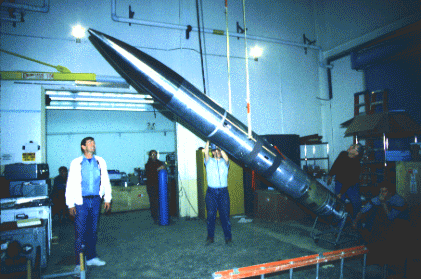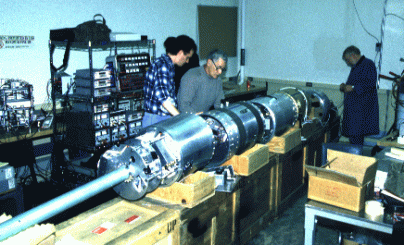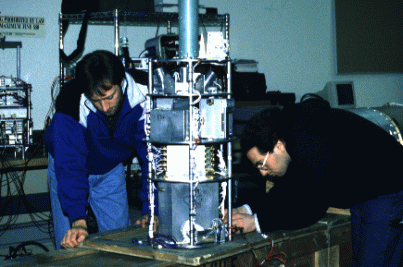The Microburst Rocket Experiment


The precipitation of magnetospheric electrons on the earth's atmosphere occur in many different spatial and temporal structures. One particular form of interest, called "microbursts", predominate the morningside precipitation. Microbursts are characterized by the short duration (~.3 sec) quasi-periodic (interval ~.7 sec) bursts of electrons.
We designed a rocket experiment to study the microburst phenomenon.
The payload carried electron detectors, and VLF wave antennae.
The rocket was successfully launched on the 6th May 1993.
The data obtained from this experiment is being analyzed
at this moment.

This photograph shows the different sections of the rocket : (from left to right) the experiment module, telemetry section, attitude control system, recovery module, and high-velocity separation system.

Scientists working on the rocket payload at the final integration. The payload carried sophisticated electron detectors and VLF wave antanae.